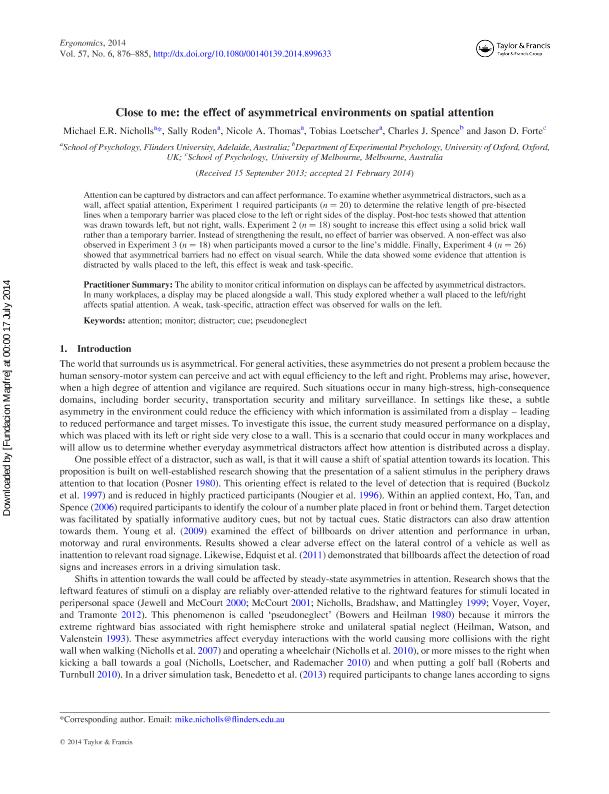Close to me : the effect of asymmetrical environments on spatial attention

Contenido multimedia no disponible por derechos de autor o por acceso restringido. Contacte con la institución para más información.
| Tag | 1 | 2 | Valor |
|---|---|---|---|
| LDR | 00000cab a2200000 4500 | ||
| 001 | MAP20140025732 | ||
| 003 | MAP | ||
| 005 | 20140724124910.0 | ||
| 008 | 140717e20140602esp|||p |0|||b|spa d | ||
| 040 | $aMAP$bspa$dMAP | ||
| 084 | $a875 | ||
| 245 | 0 | 0 | $aClose to me$b: the effect of asymmetrical environments on spatial attention$cMichael E.R. Nicholls...[et.al] |
| 520 | $aAttention can be captured by distractors and can affect performance. To examine whether asymmetrical distractors, such as a wall, affect spatial attention, Experiment 1 required participants (n = 20) to determine the relative length of pre-bisected lines when a temporary barrier was placed close to the left or right sides of the display. Post-hoc tests showed that attention was drawn towards left, but not right, walls. Experiment 2 (n = 18) sought to increase this effect using a solid brick wall rather than a temporary barrier. Instead of strengthening the result, no effect of barrier was observed. A non-effect was also observed in Experiment 3 (n = 18) when participants moved a cursor to the line's middle. Finally, Experiment 4 (n = 26) showed that asymmetrical barriers had no effect on visual search. While the data showed some evidence that attention is distracted by walls placed to the left, this effect is weak and task-specific. | ||
| 773 | 0 | $wMAP20100019818$tErgonomics : the international journal of research and practice in human factors and ergonomics$dOxon [United Kingdom] : Taylor & Francis, 2010-$x0014-0139$g02/06/2014 Volumen 57 Número 6 - junio 2014 |

